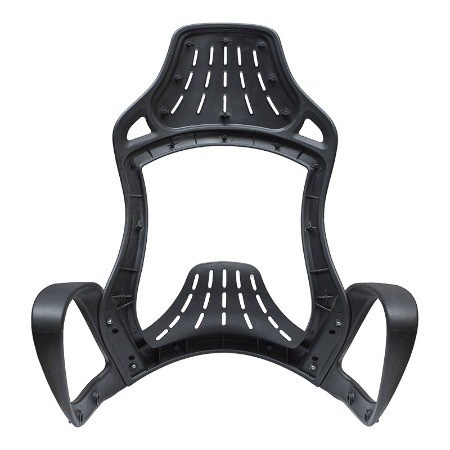Call Us
+86 0572-5911661
2025-08-04
An ergonomic backrest plays a crucial role in maintaining proper spinal alignment and reducing pressure on the lower back. Unlike conventional backrests, ergonomic designs are specifically engineered to support the natural curve of the spine, which helps prevent slouching and promotes better sitting posture. The science behind these backrests involves understanding the biomechanics of the human body and creating support systems that adapt to individual needs.
Zhejiang Lubote Plastic Technology Co., Ltd., as a professional manufacturer of chair components, emphasizes the importance of precision engineering in creating effective backrest solutions. Their research shows that proper back support can reduce spinal compression by up to 35% compared to standard chairs. Here are the key benefits of using an ergonomic backrest:

Traditional backrests often provide flat, rigid support that doesn't conform to spinal curves, while ergonomic backrest designs incorporate several advanced features:
| Feature | Conventional Backrest | Ergonomic Backrest |
|---|---|---|
| Lumbar Support | Flat or minimal support | Contoured to fit spinal curve |
| Adjustability | Fixed position | Height and depth adjustments |
| Material | Standard padding | Pressure-relieving materials |
| Breathability | Often non-breathable | Ventilated designs |
When searching for the best ergonomic backrest for office chair, several critical factors determine its effectiveness. The ideal backrest should complement your existing office chair while providing customized support that adapts to your body's needs throughout the workday.
High-quality ergonomic backrests share several common features that set them apart from standard options:
The choice of materials significantly impacts the performance and durability of an office chair backrest. Zhejiang Lubote Plastic Technology Co., Ltd. utilizes advanced polymer compounds in their chair components that offer both strength and flexibility. Mesh fabrics are particularly popular for office settings because they:
Selecting the right adjustable lumbar support backrest for chair requires understanding your specific spinal needs and how different adjustment mechanisms can address them. The lumbar region (lower back) is particularly vulnerable to strain during prolonged sitting, making targeted support essential.
Modern ergonomic backrests offer various methods for customizing lumbar support:
Proper lumbar support should fill the gap between your lower back and the chair without pushing you forward. A simple test involves:
A memory foam backrest cushion for pain relief offers unique advantages for individuals suffering from chronic back discomfort. Memory foam's viscoelastic properties allow it to conform precisely to body contours while providing therapeutic support that reduces pressure on sensitive areas.
Memory foam works through several mechanisms to provide pain relief:
| Material | Pressure Relief | Durability | Breathability | Maintenance |
|---|---|---|---|---|
| Memory Foam | Excellent | Good | Fair | Easy |
| Gel | Good | Fair | Excellent | Moderate |
| Polyurethane | Fair | Good | Good | Easy |
| Latex | Good | Excellent | Good | Moderate |
A breathable mesh backrest for computer chair solves one of the most common complaints about office seating - heat buildup and moisture accumulation. The open structure of mesh materials allows for continuous air circulation, keeping users cooler and more comfortable during extended computer work sessions.
Not all mesh backrests perform equally. High-quality designs incorporate several engineering considerations:
Proper care extends the life of mesh backrests significantly. Zhejiang Lubote Plastic Technology Co., Ltd. recommends these maintenance practices:
For those specifically seeking ergonomic backrest support for lower back pain, specialized designs target the lumbar region with precision. These backrests go beyond general support to provide therapeutic benefits that can alleviate chronic discomfort.
Effective pain-relieving backrests typically include:
While an ergonomic backrest helps significantly, combining it with other practices enhances results: